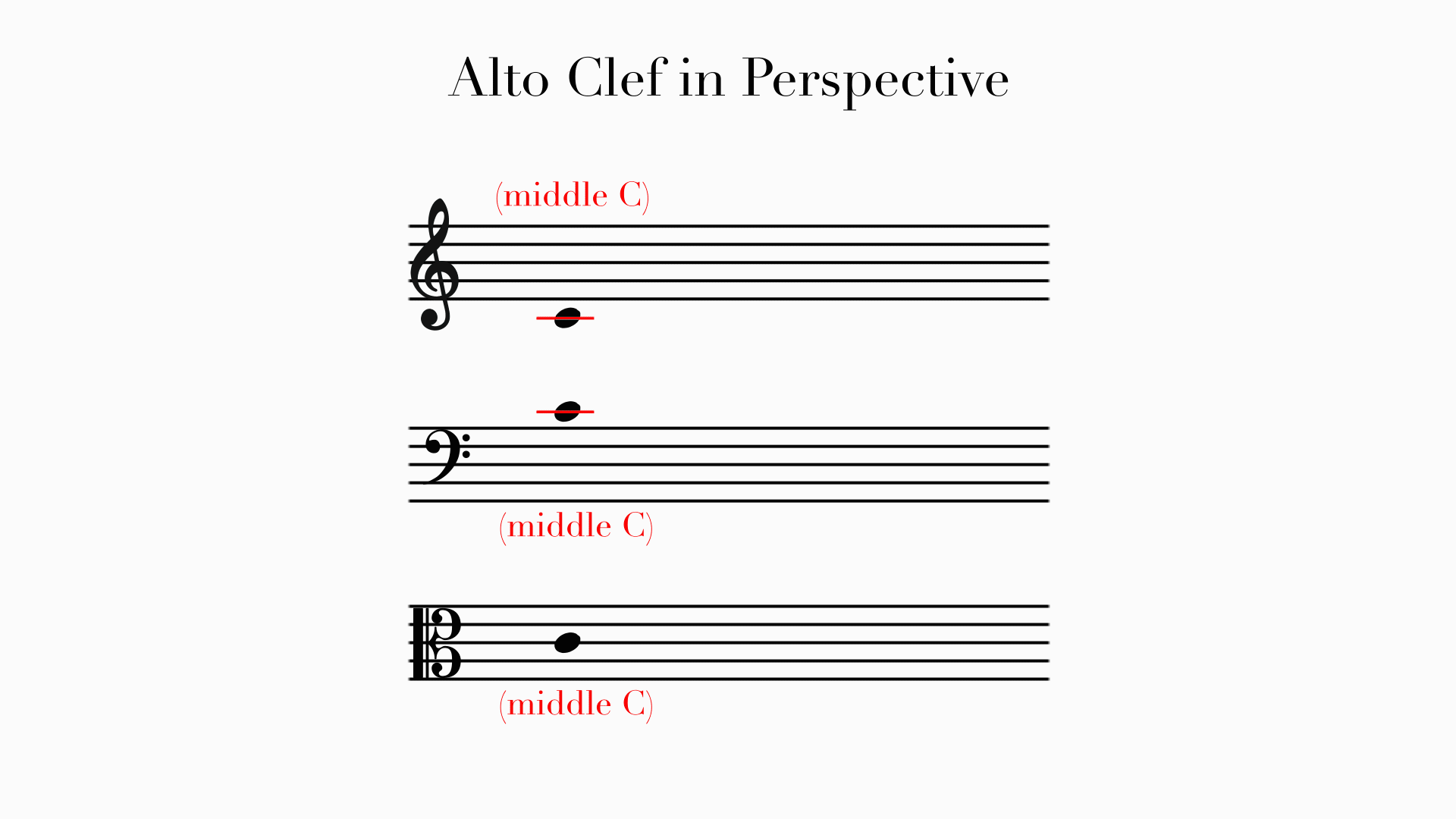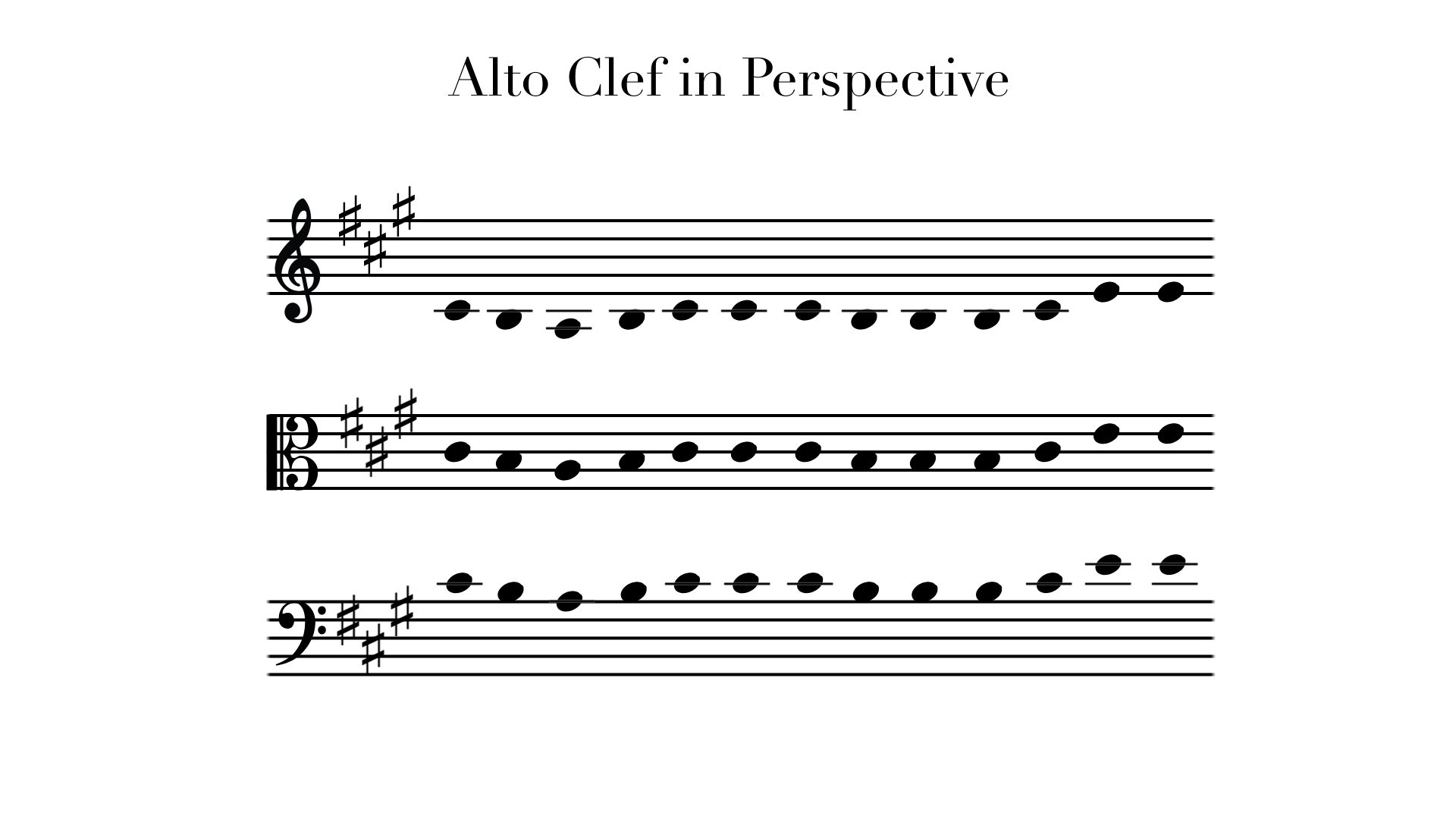The Alto Clef: How Does It Work?
Nothing strikes fear into the heart of the musician like the Alto Clef. In fact, I think alto clef is third on the list of fears, right behind Public Speaking, and Death. So, let’s try to demystify it.
CLEFS
There are three types of Clefs. There’s G clefs, which tell us where the G line is, such as the treble clef. There’s F clefs, which tell us where the F line is, such as the bass clef. And then C clefs, which tell us where middle C is, such as the Alto clef.
The purpose of any clef is to keep the majority of the notes on the staff at all times. We hate reading ledger lines, and the point of clefs is to a) tell us how to read the music, and b) try to minimize the number of ledger lines.
The most common instrument that uses the alto clef is the viola. The viola sits directly between the violin and cello in range, and therefore doesn’t nicely fit into either treble or bass clef. Here’s the viola’s lowest note as shown on the treble clef. And here’s one of the viola’s highest notes, shown on the bass clef. Not very practical in either case.
But, for most of us, we aren’t used to looking at the alto clef. Many musicians learned to read because of their instrument, which is likely primarily in treble or bass clef, and many musicians learned piano, which means that both treble and bass clefs are familiar. But, unless you play viola, or specialize in Baroque music, the C clefs are probably foreign to you. So, let’s put alto clef in perspective of something more familiar.
PUTTING IT IN PERSPECTIVE
Here’s middle C on the treble clef. Here’s middle C on the bass clef, and here’s Middle C on the alto clef. On the treble clef, it’s one ledger line down, and on the bass it’s one ledger line up. So, we could shrink the distance between the two, and extend that ledger line all the way across, and now we can place our Alto clef in a way that makes sense spatially.
Here’s Mary Had A Little Lamb at the same place on every clef (A major). See how it is too low for the treble clef? And too high for the bass clef? But it fits nicely in the staff on the alto clef. This is why music that is written in that range works best.
Perhaps another way of seeing it is in relation to the treble clef, where there is a one note difference. This is B on a treble clef, this is C on an alto clef. This is F on the treble, this is G on the alto. This helped me in learning the alto clef. Of course, do remember that the notes on the alto are an octave lower.
ALTO CLEF ACRONYMS
In terms of Acronyms for helping you remember the lines and spaces. The lines are Furry Animals Can Eat Grass, and for the spaces, Great Big Dogs Fight. I like that one because it is similar to the bass clef lines (Great Big Dogs Fight Animals). I suppose you could still use Great Big Dogs Fight Animals for the spaces, it’s just that Animals would go on the space above the staff.
And, as with everything else in music, it just takes time and practice to get used to. If you work at it, I promise alto clef will get easier.
If you have any strategies that make alto clef easier to read for you, please let me know in the comments below. I’ll see you next time.




